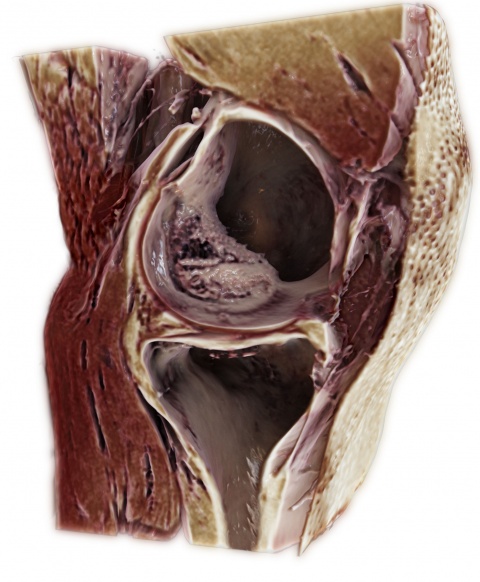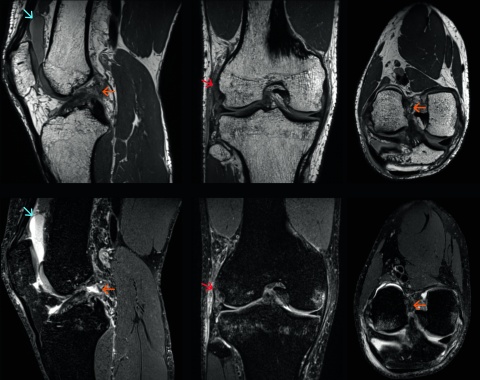News • Innovation
GOKnee3D: Siemens boosts MRI productivity with new application
During the Annual Meeting of the Radiological Society of North America (RSNA), held in Chicago, USA, Siemens Healthineers presents an innovative MRI application that helps to shorten the time it takes to perform comprehensive diagnostic exams of the knee.

At the moment, a standard knee examination could take around 20 minutes. With GOKnee3D, a high-resolution diagnostic 3D knee exam can be acquired in 10 minutes. The acquisition of high-resolution isotropic 3D images subsequently allows the flexible evaluation of the images in all possible planes including double oblique and curved planar. Increasing MRI efficiency in this way is especially important because knee examinations are the third most common type of MRI examination, accounting for 11 percent of all scans. By cutting the scan time in half and by reducing routine work for the radiology staff, Siemens Healthineers is making a key contribution to boosting MRI productivity. It also helps reduce patient wait times and improve patient experience during the examinations.

The innovative volume acquisition is based on a Caipirinha Space protocol1, which enables higher scan speeds and optimal image reconstruction with better signal quality than in previous technologies. To develop and clinically validate the technique, Siemens Healthineers partnered with Johns Hopkins University in Baltimore, USA. "GOKnee3D enables comprehensive evaluation of internal derangement to the knee," confirms Jan Fritz, MD, of the Johns Hopkins University School of Medicine. "The fully automated Caipirinha Space protocol provides high-quality MR imaging in ten minutes and ensures consistency of image quality and operational efficiency. The high-spatial resolution isotropic data sets help to visualize abnormalities with high accuracy, enable reformations of virtually any imaging plane, and the creation of high-quality 3D rendered MR images," says Fritz.
"Working closely with our valued partners, we were once again able to demonstrate our innovation leadership in the field of magnetic resonance imaging," states Dr. Christoph Zindel, Senior Vice President and General Manager of Magnetic Resonance Imaging at Siemens Healthineers. "With GOKnee3D, we significantly accelerate MR imaging without compromising on diagnostic quality and expand our portfolio with a further highly automated and standardized application of high clinical relevance. We not only increase efficiency, but help improve patient care by opening up MR technology to more patients, and making the examinations much more comfortable," says Zindel.
Supported by dedicated, high channel knee coils, and automated field-of-view adaptation based on machine learning and artificial intelligence, the scanner acquires the volume data of the knee joint at the touch of a button, thus reducing routine work for the radiology staff. GOKnee3D is available as an upgrade for Siemens Healthineers scanners, initially for Magnetom Skyra 3T and Magnetom Aera 1.5T systems. It is planned to be rolled out to other scanners of the Magnetom World.
Source: Siemens Healthineers
28.11.2017











